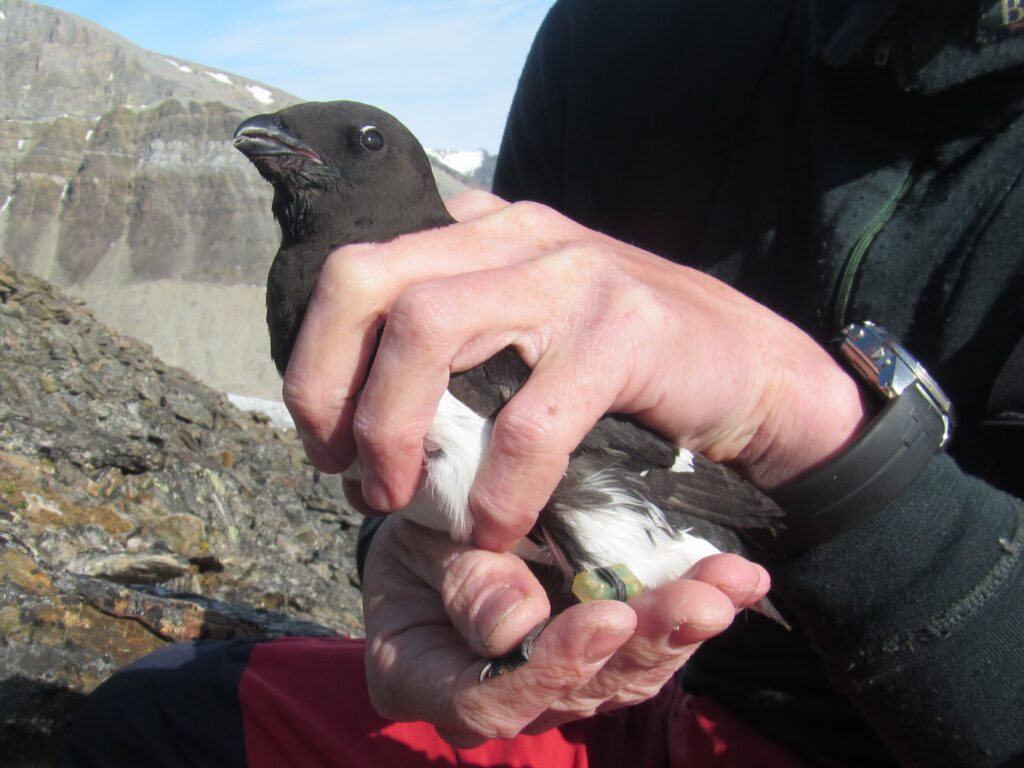How to examine the breeding behaviour of cavity-nesting seabirds
Geolocators have traditionally been used to map bird migration and wintering grounds. In a new study, scientists examined the possibility to use geolocators to document individual behavioural differences in Little Auks Alle alle throughout the breeding season.
The challenge of studying unavailable birds
Investigating the ecology of marine animals imposes a continuous challenge due to their temporal and/or spatial unavailability. Light-based geolocators (GLS) are animal-borne devices that provide a relatively cheap and efficient method to track seabird movement and are commonly used to study migration. Researchers in SEAPOP have contributed to a study exploring the potential of GLS data to establish individual behaviour during the breeding period in a rock crevice-nesting seabird, the Little Auk.
Comparison of methods
By deploying GLS on 12 breeding pairs, they developed a methodological workflow to extract the birds’ behaviour from GLS data (nest attendance, colony attendance, and foraging activity), and validated its accuracy using behaviour extracted from a well-established method based on video recordings. They also compared breeding outcome, as well as behavioural patterns of logged individuals with a control group treated similarly in all aspects except for the deployment of a logger, to assess short-term logger effects on fitness and behavior.
High accuracy of GLS data
The results showed a high accuracy of GLS-established behavioural patterns, especially during the incubation and early chick rearing period (when birds spend relatively long time in the nest). The researchers observed no apparent effect of logger deployment on breeding outcome of logged pairs but recorded some behavioural changes in logged individuals (longer incubation bouts and shorter foraging trips).
Potential for wider application
The study provides a useful framework for establishing behavioral patterns (nest attendance and foraging) of a crevice-nesting seabird from GLS data (light and conductivity), especially during incubation and the early chick rearing period. Given that GLS deployment does not seem to affect the breeding outcome of logged individuals but does affect fine-scale behaviour, the study framework is likely to be applicable to a variety of crevice/burrow nesting seabirds, even though precautions should be taken to reduce deployment effect. Finally, because each species may have its own behavioural and ecological specificity, we recommend carrying out a pilot study before implementing the method in a new study system.
Read the article:

Photo © Sébastien Descamps

Photo © SEAPOP
Contact person: Hallvard Strøm, Norwegian Polar Institute
